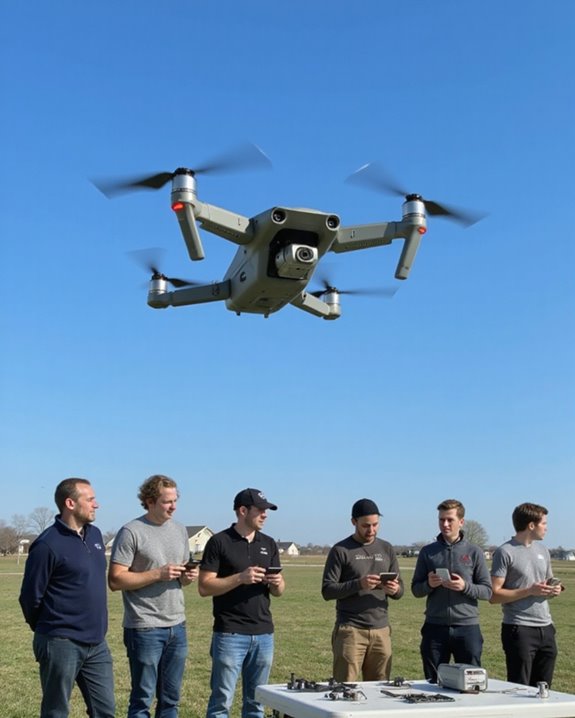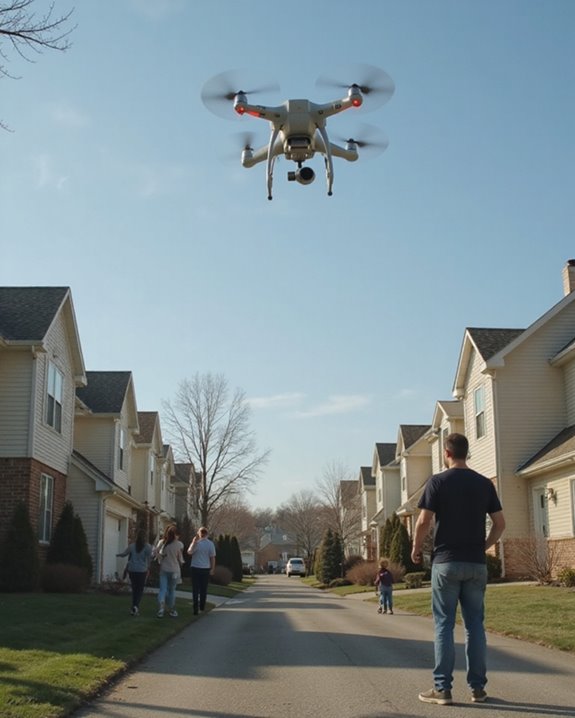Drones are amazing pilotless flying machines, buzzing about to snap stunning aerial photos, deliver food, or inspect wind turbines—no pilot’s license required! Using remote controls or smart sensors, they zip through the sky, some as tiny as your fist, others the size of small airplanes. Different models—multi-rotor, fixed-wing, or nano—feature cool tech like 4K cameras, GPS, and obstacle avoidance. Curious about which drone is right for you or how they actually work? Stick around for more!
Key Takeaways
- Drones are unmanned aerial vehicles controlled remotely or autonomously, used for tasks like photography, surveillance, delivery, and inspection.
- They use sensors, GPS, and communication systems to navigate safely and perform specific missions.
- Common types include multi-rotor, fixed-wing, hybrid VTOL, and nano drones, each suited to different applications.
- Drones vary in size, battery life, camera quality, and flight range depending on their intended use.
- Operational challenges include limited battery life, weather sensitivity, regulatory restrictions, and obstacles like trees or buildings.
Definition and Core Features of Drones
A drone, sometimes called a UAV (unmanned aerial vehicle), might sound like something out of a sci-fi movie, but it’s actually a fascinating piece of technology you might spot buzzing over your neighborhood park! Tracing Drone Origins takes us from early military prototypes to today’s high-flying gadgets used for photography, surveillance, and even pizza delivery—yes, really! The Feature Basics of drones include the ability to fly without a pilot onboard, either autonomously or by remote control. Most drones rely on smart sensors, GPS navigation, and strong communication systems to zip around safely. They’re powered mainly by batteries—no need for jet fuel here! Many can hover, follow pre-set routes, and carry small payloads, all while withstanding wind, dust, and even chilly temperatures. When choosing a drone, it’s important to consider factors like camera resolution quality, battery life, and flight range to match your specific needs.
Types of Drones by Design
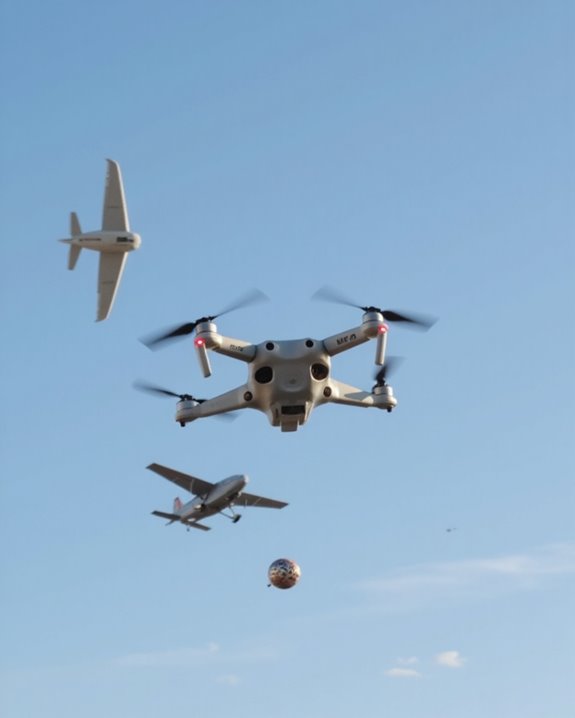
Drones come in a whole rainbow of shapes and sizes, and each one has its own special talents—kind of like superheroes with propellers! Their evolving designs make them fit for all sorts of tasks. Multi-rotor drones, for example, are the everyday all-stars, perfect for aerial photos. Fixed-wing drones zip across long distances, while fixed-wing hybrid VTOLs can take off vertically and soar like planes. Nano drones? They’re tiny but mighty, ideal for indoor adventures. Aesthetic variations abound, with sizes ranging from small travel buddies to heavy-lift giants built for industrial work! Some drones are electric and whisper-quiet, others use gasoline or even solar power. Control methods differ, too—some are ready-to-fly, others scratch-built for unique missions. There’s truly a drone for every need! Among the innovative designs are VTOL drones that combine vertical takeoff with efficient horizontal flight, expanding drone capabilities further.
Key Applications and Uses
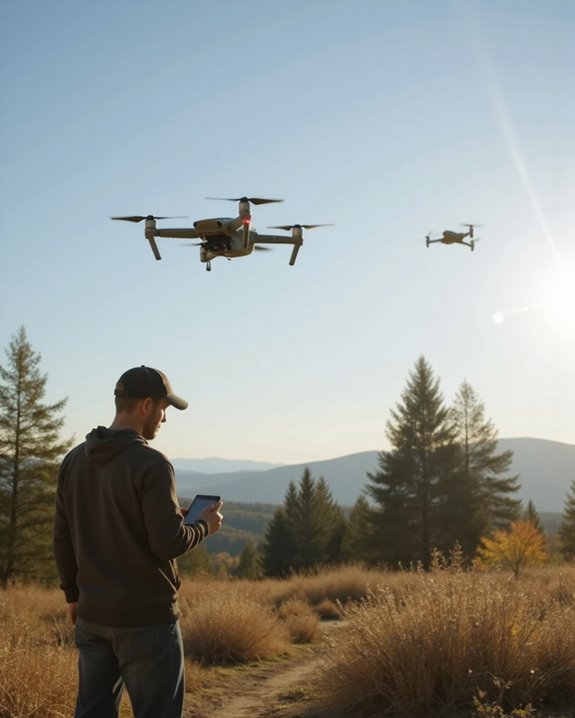
Every superhero needs a mission, and in the world of technology, drones have taken on quite a few! Today, drones swoop in to inspect wind turbines, check pipelines, and even monitor crops for signs of trouble. Farmers rely on these flying helpers for efficient agricultural management, while environmental scientists use drones for wildlife tracking and deforestation assessments. Disaster response teams deploy drones to gather real-time data after storms or wildfires, making rescue efforts safer and faster. Drone Hobbies are also soaring, with enthusiasts capturing breathtaking 8K event footage or exploring new landscapes from above. Deliveries? Drones can now bring groceries or medical supplies straight to your door! From public safety surveillance to conserving endangered species, drones are everywhere, turning ordinary missions into extraordinary ones. Many of these applications benefit from drones’ flight time duration of up to 62 minutes, which enables longer and more effective missions.
Comparative Advantages of Drone Models

Ever wondered why so many different drone models exist, or which one might suit your needs best? The answer is all about finding the right fit for your task, budget, and skill level! Multi-rotor drones, for example, are beloved for their cost-effectiveness and super easy user experience—great for beginners and those who love hovering selfies. Fixed-wing drones, while pricier, offer longer flights for mapping or surveying, but don’t expect them to hover over your backyard barbecue. Mini drones shine in Cost Analysis, being budget-friendly and fun for casual flyers. If you want high-tech features like 4K cameras or obstacle avoidance, you’ll pay more but enjoy richer experiences. Hybrid VTOL drones blend versatility and performance, though they might require a bit more reading of the manual!
Operational Challenges and Limitations
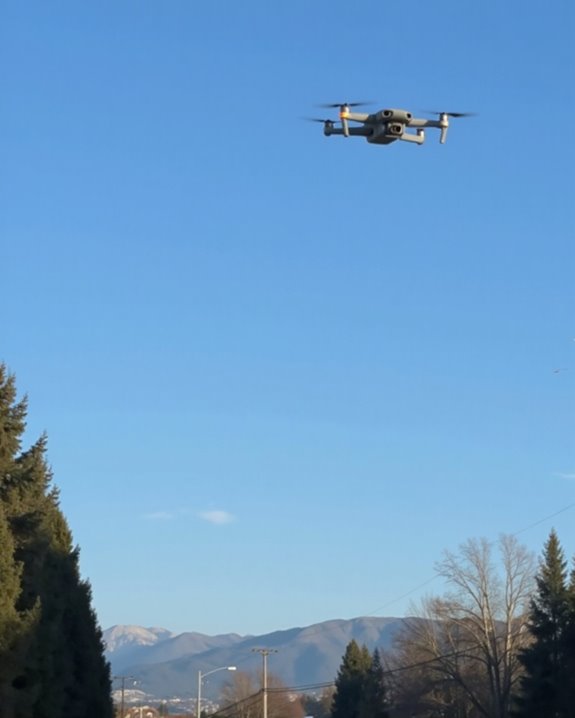
How often have you wondered what really stands in the way of a perfect drone flight? The reality is, a host of operational challenges can turn that dream flight into a tricky balancing act! Battery life is often the party crasher, with most drones needing a recharge after just 30 minutes—especially when carrying extra weight. And don’t forget terrain interference; even trees or buildings can mess with radio signals, so smart interference solutions are a must. Then there’s the weather, which can ground a drone faster than you can say “rainstorm.” Pilots have to juggle fatigue management, avoiding distractions while maintaining focus—no easy feat! Regulations, like visual line of sight rules and licensing, add another hurdle to safe, smooth, and legal drone operations.
Technical Aspects and Functional Components
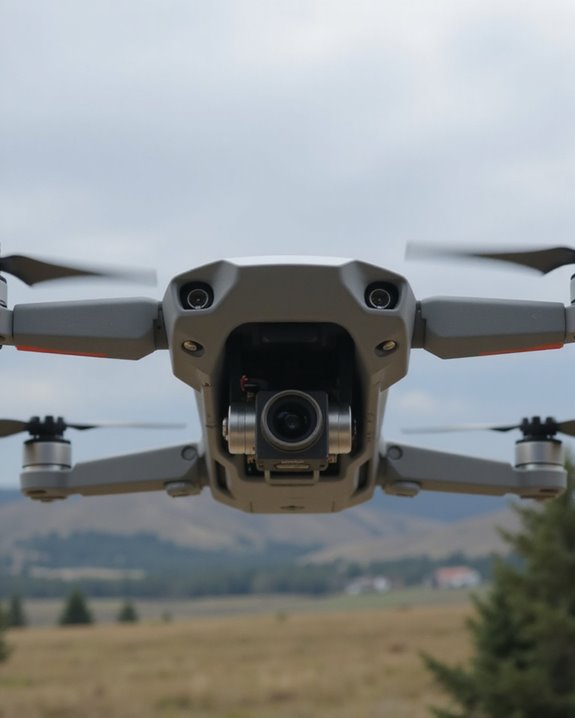
A drone might look like a flying toy at first glance, but there’s a lot more happening under the hood! The frame aerodynamics are vital—they shape the drone’s speed, stability, and how gracefully it swoops through the sky. Motors attached to the arms spin propellers for lift, while mounting systems, like gimbals, steady cameras for smooth footage. Inside, the flight controller acts as the brain, using sensor fusion—a clever mix of data from gyros, accelerometers, and GPS—to keep everything balanced and on course. Electric speed controllers (ESCs) adjust the motors’ pace, while the power distribution board and battery management system keep energy flowing. Communication is handled by antennas, WiFi, and transmitters, while extra tools, like ultrasonic sensors and LED lights, boost safety and style!
Frequently Asked Questions
Do I Need a License to Fly a Drone for Recreation or Business?
Some may think all drone flying requires the same license, but License Types differ: recreational users must complete the TRUST certification process, while business operators need the FAA Part 107 Remote Pilot Certificate, which involves a more rigorous certification process.
What Are the Legal Restrictions on Where Drones Can Fly?
Legal restrictions on drone flights include strict Altitude Regulations, limiting drones to 400 feet above ground level, and Zone Restrictions, prohibiting operations in no-fly zones such as airports, military bases, and national parks without special FAA authorization.
How Much Do Drones Typically Cost?
Coincidentally, as Drone Pricing trends downward, cost factors like camera quality, flight range, and brand still dictate wide variance. Typically, hobbyist drones start at $20, while commercial models can exceed $20,000, reflecting their advanced features.
Are There Privacy Concerns Related to Drone Usage?
Privacy concerns regarding drone usage arise from drone surveillance capabilities, which can intrude on personal spaces and collect sensitive data. Ethical monitoring practices and updated regulations are essential to balance technological innovation with the protection of individual privacy rights.
What Should I Do if My Drone Crashes or Gets Lost?
When a drone crashes or is lost, the operator should prioritize crash prevention and signal recovery by inspecting damage, retrieving all parts, utilizing GPS tracking, documenting the incident, and maintaining safety protocols to facilitate recovery and prevent future incidents.

